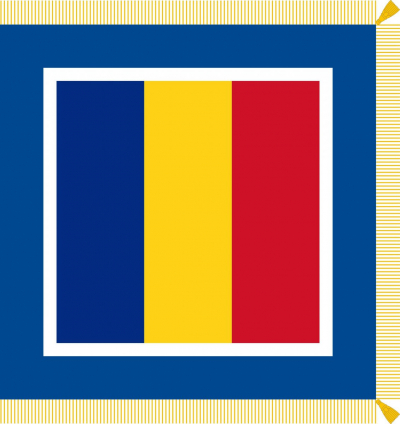Nicolae Ceauescu ( chow-SHESK-oo, Romanian: [nikola.e tea.uesku] (listen); 5 February [O.S. 23 January] 1918 25 December 1989) was a Romanian communist politician and dictator. He was the general secretary of the Romanian Communist Party from 1965 to 1989, and the second and last Communist leader of Romania. He was also the country's head of state from 1967, serving as President of the State Council and from 1974 concurrently as President of the Republic, until his overthrow and execution in the Romanian Revolution in December 1989, part of a series of anti-Communist uprisings in Eastern Europe that year.
Born in 1918 in Scorniceti, Ceauescu was a member of the Romanian Communist youth movement. Ceauescu rose up through the ranks of Gheorghe Gheorghiu-Dej's Socialist government and, upon Gheorghiu-Dej's death in 1965, he succeeded to the leadership of the Romanian Communist Party as general secretary.Upon his rise to power, he eased press censorship and openly condemned the Warsaw Pact invasion of Czechoslovakia in his speech on 21 August 1968, which resulted in a surge in popularity. However, the resulting period of stability was brief as his government soon became totalitarian and was considered the most repressive in the Eastern Bloc at the time. His secret police, the Securitate, was responsible for mass surveillance as well as severe repression and human rights abuses within the country, and controlled the media and press. Economic mismanagement due to failed oil ventures during the 1970s led to skyrocketing foreign debts for Romania. Ceauescu's attempts to implement policies that would lead to a significant growth of the population led to a growing number of unsafe abortions and increased the number of orphans in state institutions. In 1982, Ceauescu directed the government to export much of the country's agricultural and industrial production in an effort to repay these debts. The shortages that followed drastically lowered living standards, leading to heavy rationing of food, water, oil, heat, electricity, medicine and other necessities. His cult of personality experienced unprecedented elevation, followed by extensive nepotism and the intense deterioration of foreign relations, even with the Soviet Union.
As anti-government protesters demonstrated in Timioara in December 1989, he perceived the demonstrations as a political threat and ordered military forces to open fire on 17 December, causing many deaths and injuries. The revelation that Ceauescu was responsible resulted in a massive spread of rioting and civil unrest across the country. The demonstrations, which reached Bucharest, became known as the Romanian Revolutionthe only violent overthrow of a communist government in the course of the Revolutions of 1989. Ceauescu and his wife Elena fled the capital in a helicopter, but they were captured by the military after the armed forces defected. After being tried and convicted of economic sabotage and genocide, both were sentenced to death, and they were immediately executed by firing squad on 25 December.
The president of Romania (Romanian: Președintele României) is the head of state of Romania. Following a modification to the Romanian Constitution in 2003, the president is directly elected by a two-round system and serves for five years. An individual may serve two terms. During their term in office, the president may not be a formal member of a political party.
The office of president was created in 1974, when Communist leader Nicolae Ceaușescu elevated the presidency of the State Council to a fully fledged executive presidency. It took its current form in stages after the Romanian Revolution—Ion Iliescu deposed Ceaușescu, resulting in the adoption of Romania's current constitution in 1991.
Klaus Iohannis is the incumbent president since his inauguration on 21 December 2014. Iohannis is of full Transylvanian Saxon descent, making him the first president from Romania's German minority.

1989Dec, 25
Deposed President of Romania Nicolae Ceaușescu and his wife, Elena, are condemned to death and executed after a summary trial.
Choose Another Date
Events on 1989
- 15Apr
Tiananmen Square protests of 1989
Upon Hu Yaobang's death, the Tiananmen Square protests of 1989 begin in China. - 26Apr
Tiananmen Square protests of 1989
People's Daily publishes the April 26 Editorial which inflames the nascent Tiananmen Square protests - 27Apr
Tiananmen Square protests of 1989
The April 27 demonstrations, student-led protests responding to the April 26 Editorial, during the Tiananmen Square protests of 1989. - 20May
Tiananmen Square massacre
The Chinese authorities declare martial law in the face of pro-democracy demonstrations, setting the scene for the Tiananmen Square massacre. - 5Jun
Tiananmen Square protests of 1989
The Tank Man halts the progress of a column of advancing tanks for over half an hour after the Tiananmen Square protests of 1989.

 English
English  español
español  français
français  português
português  русский
русский  العربية
العربية  简体中文
简体中文 